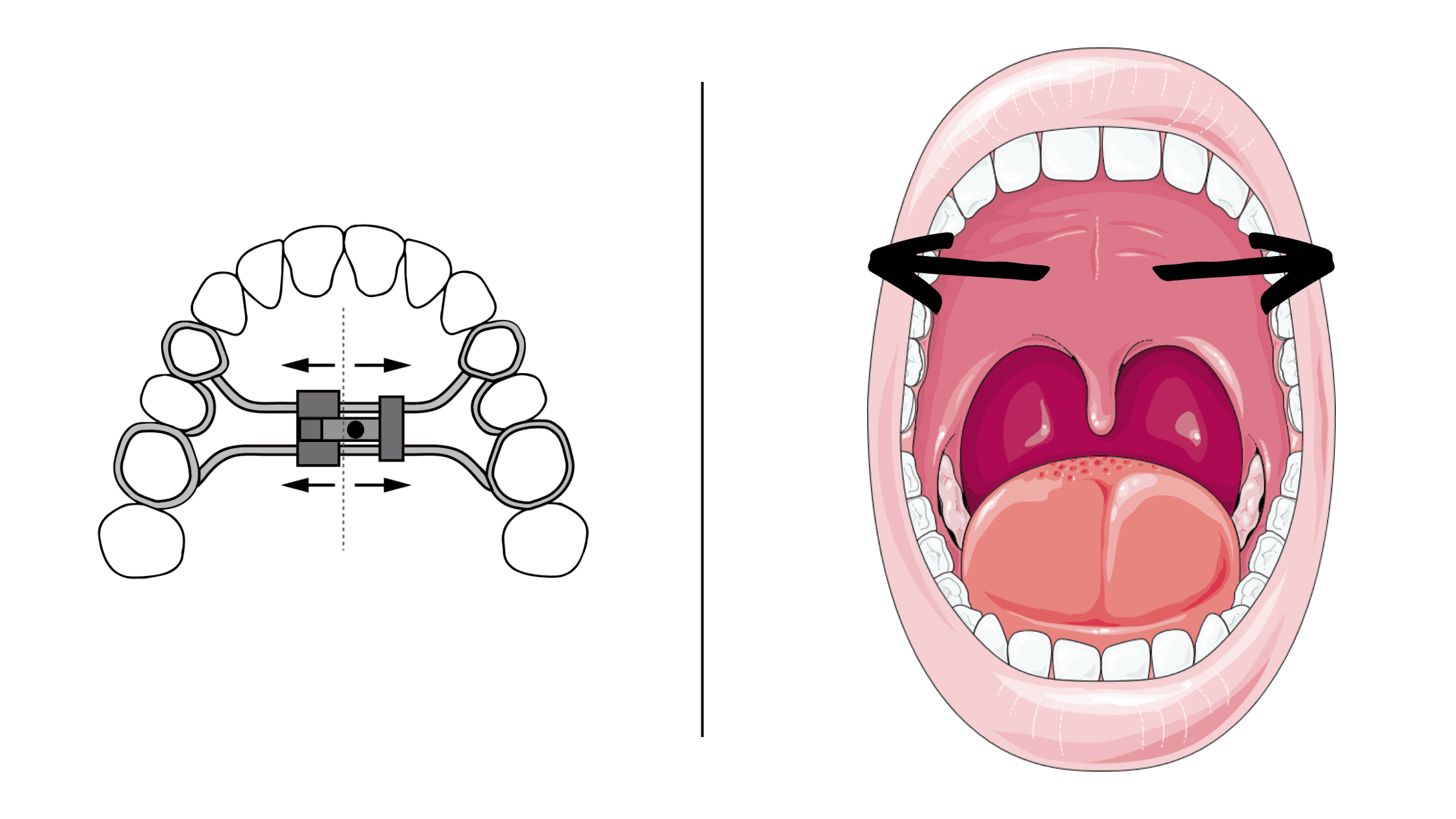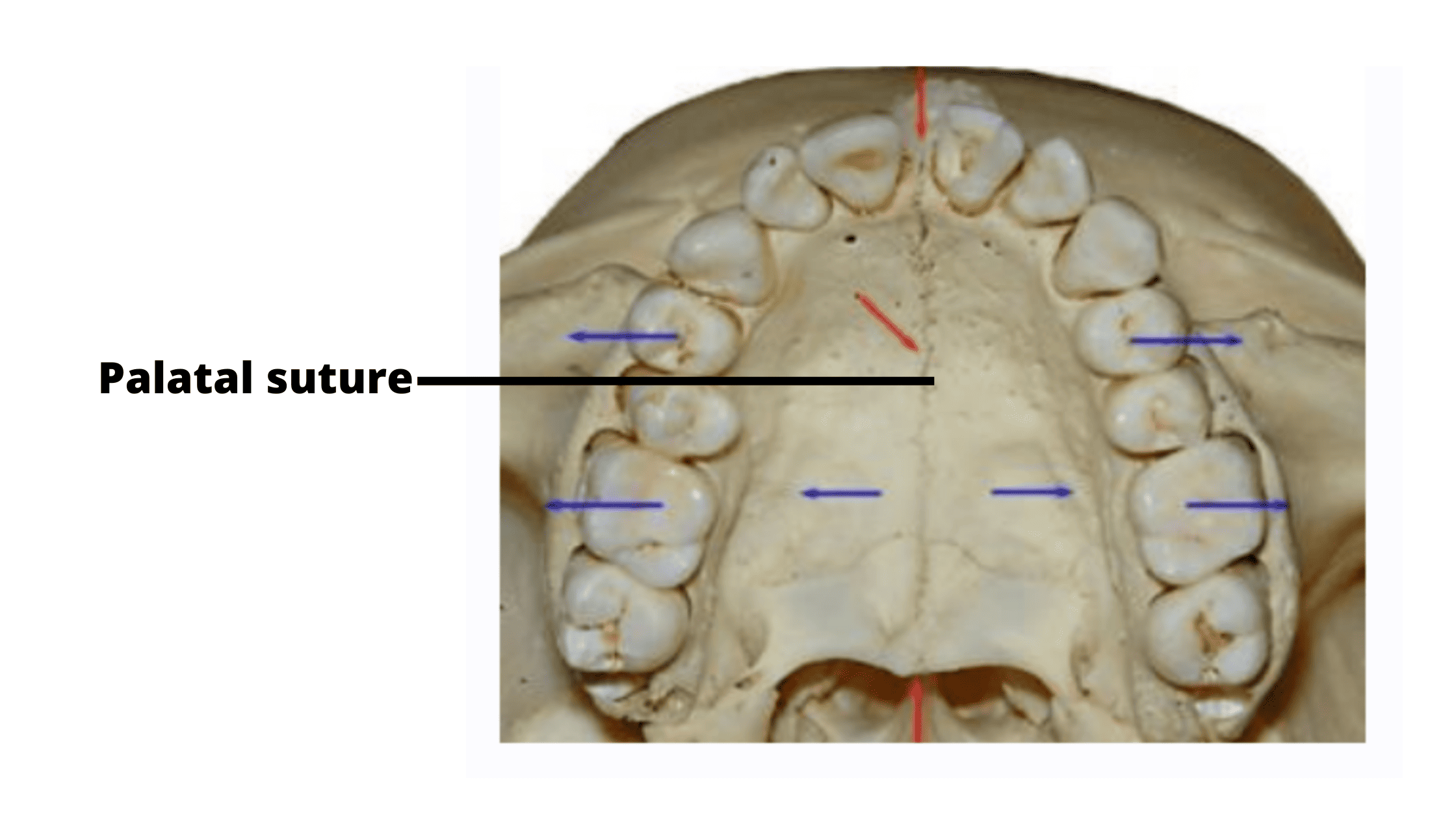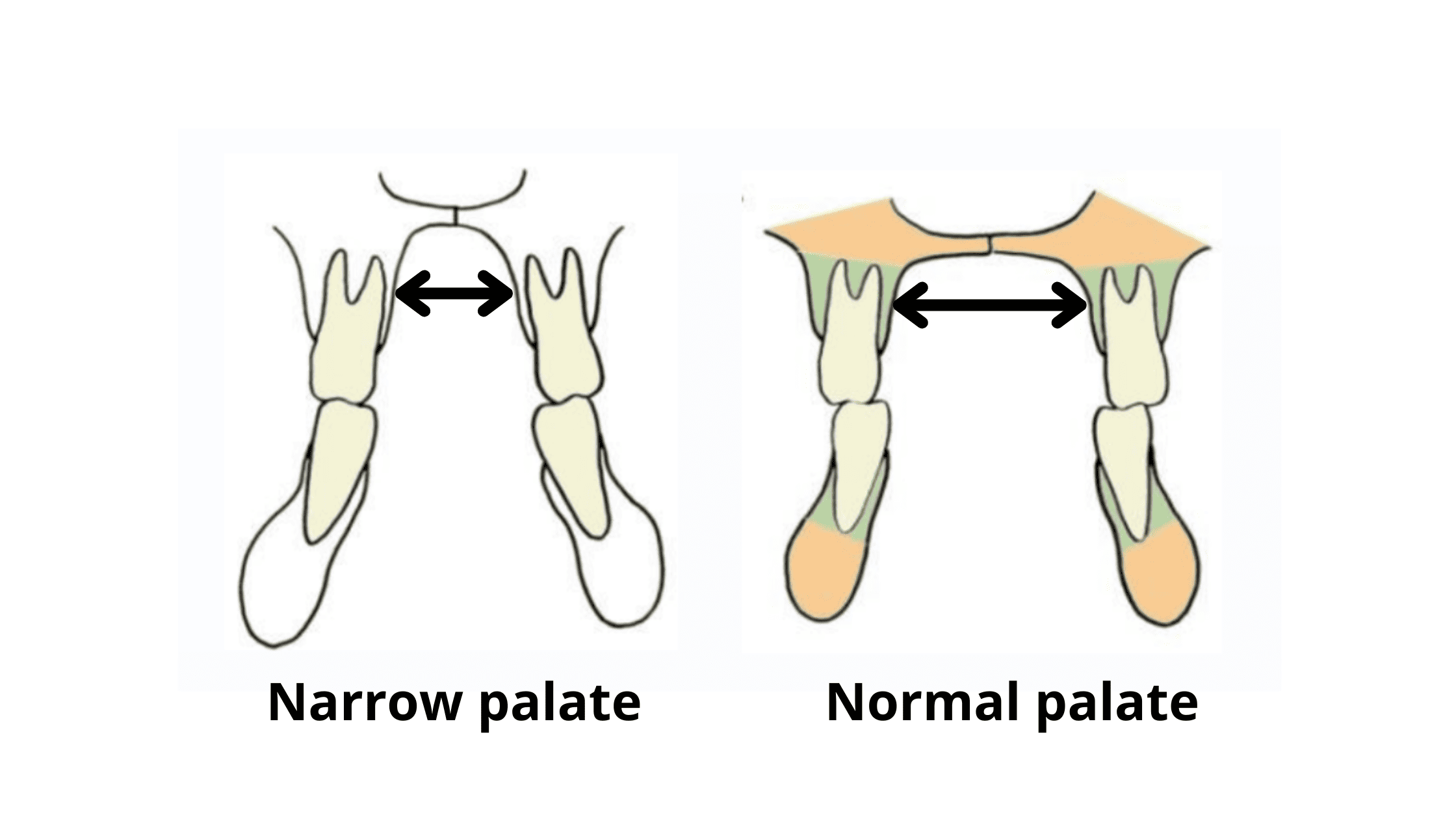Palate Expander Can Change your Face! Here's how

Palate expansion is a powerful orthodontic treatment that can do more than just align teeth. It can also improve facial balance and symmetry by widening the upper jaw.
In this article, we’ll explain how a palate expander can change your face, when treatment works best, and some alternative options.
In this article, we’ll explain how a palate expander can change your face, when treatment works best, and some alternative options.
In this article...
1. What Is a Palate Expander and How Does It Work?
2. What Causes a Narrow Palate, and What Can Happen If It’s Not Treated?
3. How Can a Palatal Expander Change My Face?
4. Can Palatal Expansion Work in Adults?
5. Can a Narrow Upper Jaw Recover on Its Own?
6. How can palatal expander improve your teeth and smile?
7. The different types of palate expanders:
8. Alternatives to palate expanders:
What Is a Palate Expander and How Does It Work?
A palate expander is an orthodontic device placed on the roof of the mouth. It applies gentle pressure to widen a narrow upper jaw, creating more space so the teeth can align properly.But does a palate expander have any effect on facial structure? The answer is yes—especially during growth.
The upper jaw, also called the maxilla, sits in the center of the face. It supports the lower part of the orbital bone that houses the eyes, connects centrally with the nose, and supports the cheekbones on both sides.

Because of its strategic location, expanding the upper jaw can have a positive impact on facial growth and development.
A wider maxilla leads to more defined cheekbones, clearer nasal airways, and wider, more aesthetically pleasing eyes.
This becomes easier to understand when we look at people with a narrow upper jaw. They often have a long, narrow face, flatter cheekbones, a pinched or narrow nose, and dark circles under the eyes due to lack of bone support.
The upper jaw also plays an important role in guiding the growth of the lower jaw, resulting in a balanced profile and symmetrical facial appearance.
But does a palate expander work well for everyone? Not exactly. As we get older, palatal expansion becomes more difficult. Adults who have finished growing don’t respond to palate expanders the same way children do, because the bones are no longer flexible.
The best results are usually seen between 7 and 14 years of age, when the palate is still developing and can be expanded more easily.
What Causes a Narrow Palate, and What Can Happen If It’s Not Treated?
The face is made up of 13 bones. Like puzzle pieces, these bones are connected by joints called sutures.
During childhood, these sutures have a high growth potential. When they are properly stimulated, they produce new bone and allow the face to grow and mature properly.
This stimulation mainly comes from everyday functions such as chewing, breathing, speaking, and swallowing. During these functions, the facial and oral muscles apply repeated tensions to these sutures, promoting normal jaw and facial growth.

So, when the upper jaw is narrow, it usually means the palatal suture didn’t receive enough stimulation during the growth period. Two key factors play a major role here: mouth breathing and tongue posture. In fact, the tongue alone is made up of 8 different muscles!

When a child breathes normally through the nose, the tongue naturally rests against the palate. This posture helps stimulate the palatal suture and encourages the upper jaw to widen normally.
In contrast, children who breathe mainly through the mouth often have a low tongue posture. As a result, the palate doesn’t receive enough stimulation, which can lead to a narrow upper jaw.

Now, what happens if a narrow palate is not treated?
Remember, all facial bones are interconnected through sutures. When the palate and upper jaw are underdeveloped, this can affect overall facial structure. You may see less defined cheekbones, a pinched or narrow nose, and eyes that appear more round than wide.
The growth of the lower jaw is also impacted. A narrow upper jaw can cause the lower jaw to grow downward and backward. The result is a receding chin and a long, narrow face.

Over time, this can create a cycle. A narrow upper jaw leaves less room for the tongue, making proper tongue posture difficult. This often encourages mouth breathing, which further hinders palatal growth, narrows the airways, and makes nasal breathing even harder.
But the effects don’t stop there. Chronic mouth breathing can also affect head and neck posture. When the upper airways are restricted, the head may naturally tilt forward to help open the airway and make breathing easier.
How Can a Palatal Expander Change My Face?
The effect of a palatal expander on your face depends largely on age.In children, the facial bones are still growing and flexible, so palate expanders have the greatest potential to guide facial growth.
Another key benefit is that expansion opens the upper airways, which can improve nasal breathing and help break the cycle of mouth breathing and poor tongue posture we discussed earlier.
One clinical study showed that patients who underwent palatal expansion experienced an increase in nasal width from 1.5 mm to 5.5 mm. (7)
In adults, however, the face and jaws are fully developed, and the sutures have hardened. This makes it more challenging to widen the bone through palate expansion alone.
Still, as we’ll discuss later, studies show that palatal expanders can still be effective in adults, though the process and results may differ from those in children.
Can Palatal Expansion Work in Adults?
The ideal time to correct jaw growth is before the pubertal growth peak, usually around 12 years of age for girls and 14 years for boys. During this period, palatal expansion is most effective because the bones are still growing and flexible.After this stage, very little growth remains. This makes it challenging to change the size of the jaw bones. At that point, treatment mainly focuses on moving the teeth, rather than widening the bone itself.
If you look at the graph below, the growth of the upper and lower jaws follows a curve similar to the rest of the body. Growth is rapid early in life, slows down, then speeds up again during puberty before eventually stopping.

That said, completed growth in adults doesn’t mean palatal expansion is no longer possible. It just works differently.
In adults, expansion is a more forceful process. Instead of gently stimulating a flexible suture, the goal is to open a fused and hardened palatal suture. Once the suture is opened, new bone forms in the gap as it heals.
Studies have shown that certain traditional expanders, such as the Haas and Hyrax appliances, can still increase palatal width in adults. These devices were generally well tolerated and showed a relatively low risk of complications. (1)(2)
Today, more advanced techniques are available, such as miniscrew-assisted rapid palatal expansion (MARPE). This method uses small implants placed directly into the palatal bone. The expander attaches to these screws, allowing forces to act more on the bone and helping reactivate the palatal suture. (9)
However, non-surgical palatal expansion is not suitable for everyone, especially in severe cases or in older adults. Some patients may have a higher risk of failure or complications, including gum recession, tooth damage, or pain.
That’s why it’s important to discuss all options carefully with your orthodontist to determine what approach is safest and most effective for your specific case.
Can a Narrow Upper Jaw Recover on Its Own?
A narrow upper jaw cannot correct itself. This is because jaw growth may already be complete, or long-standing habits, such as mouth breathing and poor tongue posture, continue to fuel the abnormal growth pattern.The best approach is early prevention during childhood, before bone changes become permanent. Identifying and correcting risk factors early, such as mouth breathing, low tongue posture, blocked nasal airways, or allergies, can help the palate and the rest of the face return to a more natural growth pattern.
Managing these issues often requires a team approach, involving specialists such as an ENT doctor, a speech therapist, and an orthodontist.
If bone deformities are already established, the upper jaw will not fix itself. In these cases, early intervention is still important to prevent the problem from worsening while growth is still ongoing.
How can palatal expander improve your teeth and smile?
A narrow palate not only affects your facial appearance but also has direct consequences on your teeth and smile.When the palate is underdeveloped, it takes on a "V" shape, causing your smile to appear narrow with black gaps at the corners of your lips.
Palate expansion treatment can significantly improve your teeth and smile. As the upper jaw widens, it creates more space for the teeth to properly align, making your smile appear wider. This also helps resolve dental alignment issues such as crowding, crossbite and impacted teeth.
Crossbite:
- Crossbite refers to a misalignment of the upper and lower teeth, where some of the upper teeth are positioned behind the lower teeth when biting down.
- This condition can cause functional issues and affect the appearance of the smile.
Impacted teeth:
- Impacted teeth are teeth that fail to fully emerge or erupt through the gums.
- This commonly occurs with wisdom teeth (third molars), but can also affect other teeth in the mouth.
The different types of palate expanders:
Rapid palate expander:
- Include devices like Hyrax or Haas.
- High tension is applied to the palatal suture.
- The first sign of its effectiveness is the appearance of a gap or diastema between the front teeth after around 3 days.
- The screw in the middle of the palate needs to be activated twice a day throughout the treatment.
- Rapid palatal expansion is typically recommended for individuals under the age of 14.
Slow palatal expansion:
- Appliances like Quadhelix or Hawley are used.
- It involves applying mild tension.
- Effective for widening the upper jaw if applied early, preferably before 10 years old.
Surgically assisted rapid palate expander:
- This method combines surgical intervention with a rapid palatal expander.
- It is used in cases where non-surgical methods alone may not be sufficient.
- The surgical procedure helps to facilitate expansion and achieve desired results.
Alternatives to palate expanders:
Prevention:
- This approach focuses on removing obstacles and interferences that hinder normal growth of the upper jaw in early childhood. (3)
- Measures may include addressing factors such as mouth breathing, allergies, low tongue posture, and harmful habits.
Braces:
- Braces are effective in addressing dental alignment issues like crowding and crossbite.
- However, they cannot directly address skeletal issues or expand the upper jaw.
Jaw surgery:
- In severe cases where orthodontic appliances alone are insufficient, jaw surgery may be recommended.
- This surgical intervention can correct skeletal deformities and align the jaws properly.
Tooth extraction:
- If there is insufficient space in the jaw, tooth extraction may be necessary to create room for proper teeth alignment.
- Removing teeth can help create the necessary space and improve overall dental alignment.
- Nonsurgical maxillary expansion in adults: report on clinical cases using the Hyrax expander - PubMed (nih.gov)
- Nonsurgical rapid maxillary expansion in adults: report on 47 cases using the Haas expander - PubMed (nih.gov)
- Early Intervention in Pediatric Malocclusion - Decisions in Dentistry
- An Overview of Anatomical Considerations of Infants and Children in the Adult World of Automobile Safety Design - PMC (nih.gov)
- Effects of mouth breathing on facial skeletal development in children: a systematic review and meta-analysis - PMC (nih.gov)
- Breathing pattern and head posture: changes in craniocervical angles - PubMed (nih.gov)
- Skeletal and dental changes accompanying rapid midpalatal suture opening - PubMed (nih.gov)
- Evaluation of Safety Concerns with Certain Dental Devices Used on Adults – FDA Safety Communication | FDA
- Miniscrew-assisted rapid palatal expander (MARPE): the quest for pure orthopedic movement - PMC (nih.gov)
- Couv et dos ROS 4 (sop.asso.fr)
- “Parts of the figure were drawn by using pictures from Servier Medical Art. Servier Medical Art by Servier is licensed under a Creative Commons Attribution 3.0 Unported License (https://creativecommons.org/licenses/by/3.0/).”